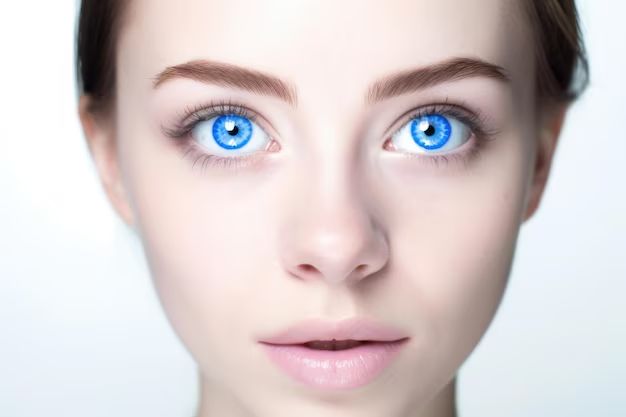Icy blue eyes are one of the most striking and beautiful eye colors. They appear to glow with an icy, light blue hue that captivates anyone who looks into them. But are icy blue eyes a real eye color or just the result of lighting and effects? Let’s take a deeper look at the genetics and science behind icy blue eyes.
The Genetics Behind Blue Eyes
Eye color is determined by the amount of melanin pigment in the iris of the eye. Brown eyes contain a lot of melanin, while blue eyes contain much less melanin. Green eyes fall somewhere in between. Icy blue eyes contain very low levels of melanin, giving them a light icy blue color.
The main gene that controls eye color is the OCA2 gene, which produces the protein that makes melanin pigment. The HERC2 gene regulates OCA2 and determines how much pigment is made. Certain variants of HERC2 and OCA2 reduce melanin production, leading to blue eyes.
Specific genetic mutations linked to icy blue eyes include:
| Gene | Mutation |
| HERC2 | rs12913832 G allele |
| OCA2 | rs1800407 C allele |
These genetic quirks turn down melanin production in the iris, reducing pigmentation and creating the icy blue color. The more of these mutations present, the lighter blue the eyes tend to be.
True Icy Blue Versus Lighting Effects
There is some debate over whether “true” icy blue eyes exist or if they are just an illusion created by lighting conditions. Several factors can influence how blue eyes appear:
- Reflected light – Blue eyes may look icier when reflecting white or blue light sources.
- Reduced pigments – Very low melanin allows more light to reflect back and enhances blue tones.
- Translucency – Thinner irises appear more translucent and icy.
- Contrast – Paler skin and hair around the eyes increase the contrast, making blue stand out more.
So while some icy blue eye appearances may be accentuated by environmental factors, genetics shows this eye color is real. The right combo of low melanin levels, thin irises, and surrounding contrast can produce truly icy blue eyes.
How Rare Are Icy Blue Eyes?
Only about 8-10% of the global population has blue eyes. Within this group, icy blue eyes are the most rare subtype. Exact statistics are hard to find, but it’s estimated that only 1-2% of the world’s population has icy blue eyes.
Regions with higher levels of fair pigmentation, like northern and eastern Europe, have a higher prevalence of icy blue eyes. But they remain very rare globally.
| Region | Blue Eyes (% of population) |
|---|---|
| Northern Europe | 89% |
| Eastern Europe | 71% |
| United States | 16-20% |
| Worldwide | 8-10% |
Even among blue-eyed individuals, icy blue is estimated to represent maybe 10-20% at most. So these striking icy eyes are definitely one of the rarest eye colors.
Famous People With Icy Blue Eyes
While icy blue eyes are rare, they are quite stunning and many celebrities are known for having them. Some famous people with notable icy blue eyes include:
- Elizabeth Taylor
- Paul Newman
- Frank Sinatra
- Robert Redford
- Milla Jovovich
- Kate Hudson
Many of these celebrities show how lighting and makeup can sometimes enhance the icy appearance of blue eyes. But their eye genetics give them a base color that can be made to pop on screen.
Conclusion
In summary, icy blue eyes are a real and rare eye color produced by specific genetic quirks that restrict melanin production. While lighting can sometimes enhance or exaggerate the icy blue tones, the genetics show this light frigid blue color naturally occurs in a small subset of the population. Icy blue eyed people should cherish their rare and gorgeous eye color that captivates anyone who gazes into them.


